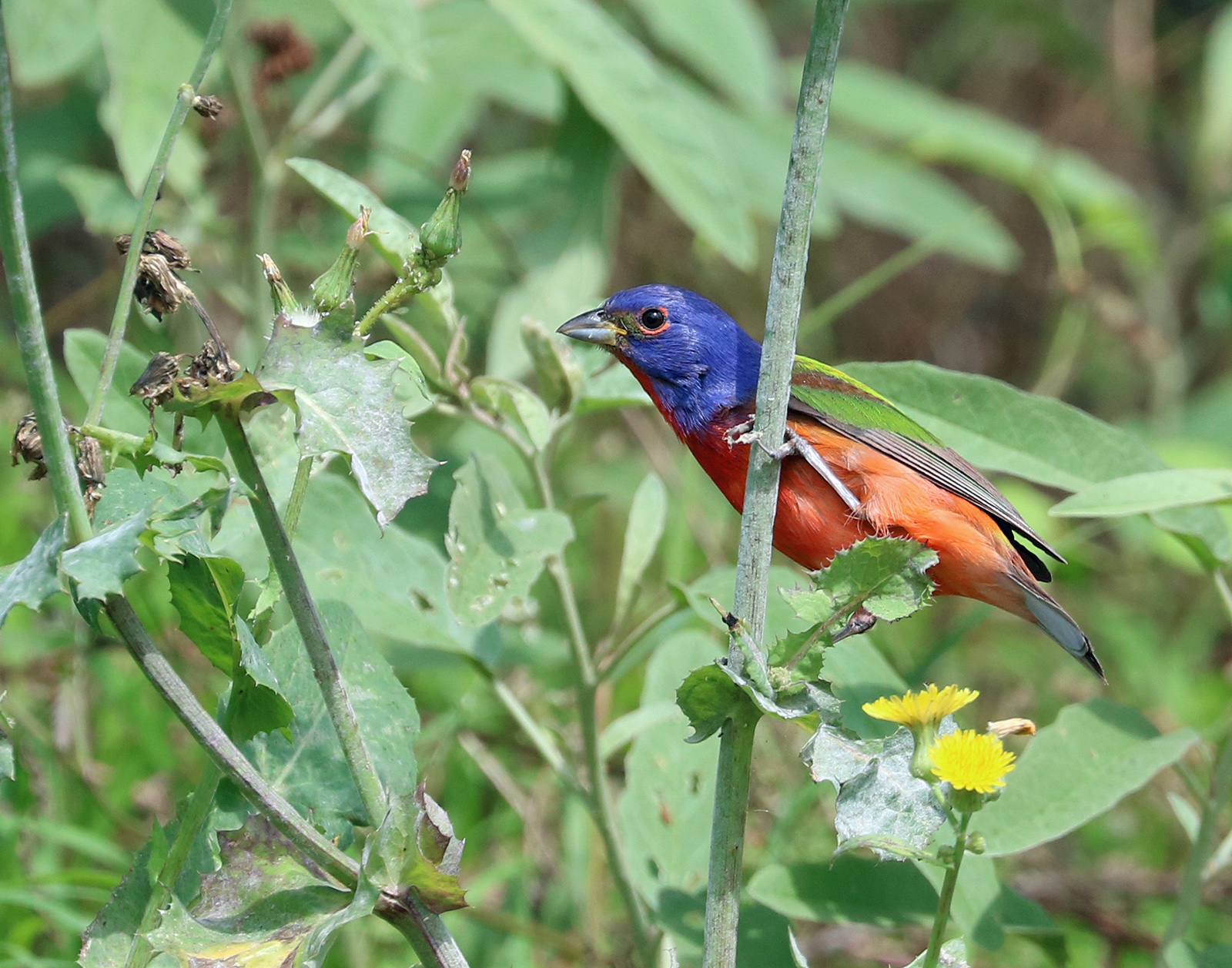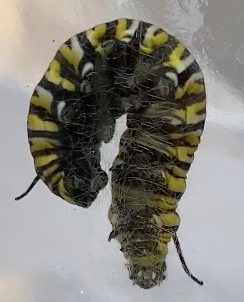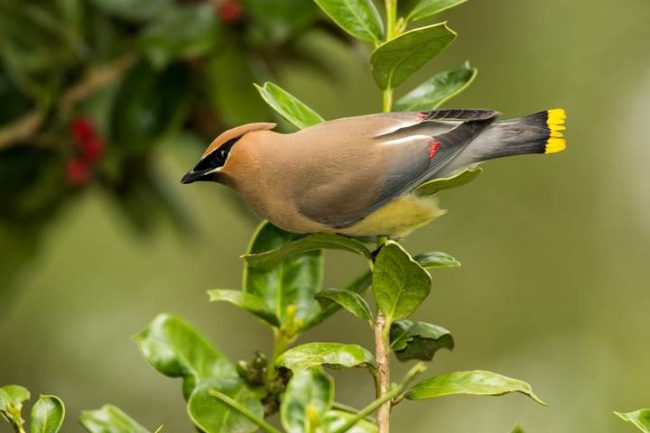The nation’s first Monarch Butterfly Champion City got a friendly neighbor in the recognition department last week when Texas Parks & Wildlife Department and Audubon Texas certified San Antonio as a leader in bird conservation with a Bird City Texas designation.
“The bird friendly status reinforces San Antonio as a leader in natural resource stewardship,” said Lee Marlowe, president of the Native Plant Society San Antonio chapter. She added that using native plants is one of the easiest and best ways to help birds and other wildlife.
Caterpillars, the larval state of butterflies and moths, serve as the primary food source for baby birds. According to Doug Tallamy, author of Nature’s Best Hope, an adult Carolina chickadee must find thousands of caterpillars to rear one clutch of young.
In short, conservation efforts to increase butterflies literally fuels birds.
San Antonio, Galveston, and Surfside merited 2021 Bird City Texas certifications, joining Dallas, Houston, Bastrop, and Port Aransas. The Bird City Texas program started last year.

The colorful Painted bunting visits San Antonio each summer. Photo by Martin Reid
According to the Bird City Texas website, these communities take science-based action in three categories: community engagement, habitat management, and threat reduction for birds. San Antonio’s Bird City Texas certification lasts through December 2023.
The designation comes with huge responsibility, said Patsy Inglet, president of the Bexar Audubon Society, which worked closely with Texas Parks & Wildlife, Audubon Texas, and San Antonio partners to attain the certification.
In addition to completing an 89-page application, San Antonio committed to execute 32 action items, six more than the required 26. The designation also requires filing annual reports and reapplying after three years.
The Bird City Texas designation carries two levels of certification: basic and High Flyer status.
Basic certification, which San Antonio secured, requires the completion of nine requirements that include such efforts as promoting bird conservation through ecotourism and recognizing World Migratory Bird Day, as well as promoting a Cats Indoors program, the use of native plants, and the control of invasive species.
Basic certification also requires cities to complete five of an additional 14 community engagement goals, eight of 19 habitat enhancement and protection goals, and four of 13 goals that create safer spaces for birds. High Flyer certification requires a city to execute an additional eight requirements. See all certification requirements here.

Guess what baby birds like to eat for breakfast, lunch and dinner? Caterpillars. Probably not monarchs, but others. Photo by Monika Maeckle
Besides habitat loss, the two top threats to birds in the U.S. are free-ranging house cats and birds striking buildings. One study estimated that 1.3 billion to 4 billion birds are killed annually by house cats in the U.S., and labeled free-ranging cats “the single greatest source of anthropogenic mortality for U.S. birds and mammals.”
In North America, an estimated 600 million additional birds are killed each year because of bird strikes – birds flying into windows or buildings – and light pollution, according the the Cornell Lab of Ornithology. The lab ranked San Antonio 10th in the country as one of the most deadly cities for spring migratory birds.
Martin Reid, a professional bird surveyor and consultant who conducts bird censuses for the San Antonio River Authority, explained that most migratory songbirds such as tanagers, sparrows, vireos, thrushes, and warblers migrate at night. Inglet said birds choose evening travel to avoid predators and take advantage of more agreeable flying conditions.
At night, the light from buildings confuses the birds, and draws them in. As a result, dead birds are often found outside tall buildings in cities early in the morning, especially during spring and fall migration periods.
We don’t see these dead creatures “because the raccoons get them or they’re cleaned up,” said Inglet.
But that may soon change, thanks to the Bird City Texas program.
Bexar Audubon recently met with Bird City Texas and community partners to hatch a plan for a survey to monitor bird strikes.
Shere Gee, who worked on Bexar Audubon’s committee to secure Bird City Texas status, said that starting in April, volunteers will walk dontown streets from 6 a.m. to 8 a.m. daily for several weeks in search of dead birds. The carcasses will be collected, tagged, and frozen. The species will be identified and counted, and that data will serve as a baseline for quantifying just how many birds perish from bird strikes as they move through San Antonio.
“We’ll present that data to building owners and ask them to do something with their glass or turn night lights out so birds can continue on their way,” said Gee.
Many migratory species pass through Texas on their way to and from breeding and wintering grounds, said Inglet.
”Birds are so important to Texas: economically, aesthetically, ecologically, and scientifically. And Texas cities have a huge stake in keeping bird populations robust and thriving,” she said. “That’s the motivation behind the Bird City Texas program.”
Yvette Stewart, community outreach coordinator for Bird City Texas, said San Antonio agreed to a “very rigorous program.”
“We’re asking for active surveillance, not a passive certification,” said Stewart. When a community earns Bird City Texas status, “it’s not like when they get it, they can put their lawn sign out and forget it.”
TOP PHOTO: Cedar waxwings are in town right now. Photo courtesy Bexar Audubon Society
Related posts:
- San Antonio’s Unofficial Pollinator Plant of the Year: Frostweed
- How to plan a successful butterfly garden
- Mostly native butterfly garden outperforms lawn every time
- A year in the life of an urban butterfly garden
- Downtown River walk plot converts to pollinator garden, creature haven
- Converting your Lawn to a Butterfly Garden
- San Antonio becomes first National Wildlife Federation Monarch Champion city
Like what you’re reading? Don’t miss a single post from the Texas Butterfly Ranch. Sign up for email delivery, like us on Facebook, or follow us on Twitter, @monikam.


Congratulations!!! Takes a lot of effort and you made it!!!